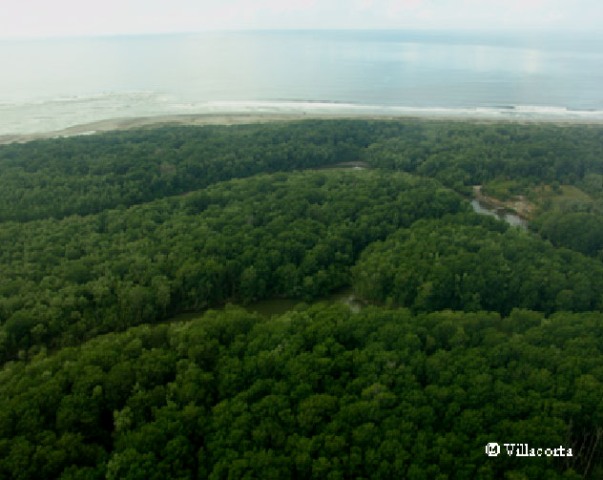El Salvador designates Jaltepeque Complex as its 6th Wetland of International Importance
The Jaltepeque Complex (49,454 ha; 13°22’N 089°03’W) is the second biggest brackish water area and intertidal forested wetland in El Salvador. Located in “La Paz y San Vicente” department, the site includes a permanent shallow water marine ecosystem and other coastal wetlands such as estuaries, sandy beaches, salt flats, and coastal brackish and freshwater lagoons as well as permanent and stationary rivers and streams. As summarised by Sofia Méndez Castillo, its diverse habitats provide nesting refuge for turtles like Chelonia mydas and Dermochelys coriacea, listed as endangered and critically endangered on the IUCN Red List, and other vulnerable species such as the turtle Lepidochelys olivacea and crocodiles (Crocodylus acutus).

The mangrove area in the site is a main resting area for aquatic migratory birds, where 64 species such as Larus spp, Thalasseus spp, and Charadrius spp have been reported. This Ramsar Site sustains fundamental local economic activities such as fishing, subsistence and industrial aquaculture, livestock, agriculture and tourism. It also provides a barrier against natural phenomena and enables aquifer recharge. The main threats to the Ramsar Site include the loss of forest due to the expansion of agricultural and livestock land, inappropriate fishing techniques, illegal hunting and water pollution generated by sewage coming for nearby communities and pesticide use. The Jaltepeque Complex also includes the Astillero Natural Protected Area (NPA) and is currently on the process of designating the Escuintla, Isla La Calzada y Tasajera as NPAs. The management plan for the Ramsar Site is under review, nevertheless conservation activities are currently done by local stakeholders.